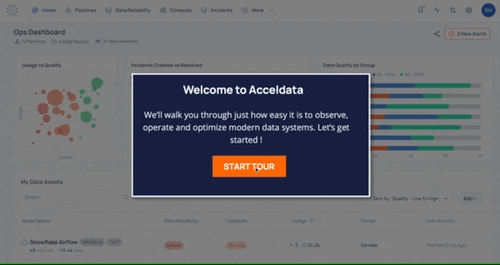Groundhog Day is supposed to give us all hope for an early spring season, but if you’re a data engineer, it might just be a reminder of the repetitive, tedious, and mundane tasks we all face every day. But, we’re problem solvers, and just like Bill Murray’s character, Phil Connors, in the modern classic, Groundhog Day, we can find a way out of repetition that’s so much a part of our world.
The reality is that today’s data teams are firefighting on all fronts and have to keep up a constant effort to ensure that data is usable. Digital transformation has become an imperative for all businesses and that has triggered a massive data explosion.
Enterprises are overwhelmed and are forced to look into modernization of their data stack to tame the perceived chaos, and the responsibility for ensuring the reliability and optimization of data supply chains, regardless of data source, technology, or scale, falls to the data engineering team.
Over the past couple of years, these efforts have collided with the COVID-19 pandemic and data engineering teams were forced to work remotely and tackle a variety of issues they previously had not faced. Many became burned out, demotivated, and some joined “The Great Resignation” and quit their job.
Data teams are struggling to find and hire qualified replacements in a tight labor market. Expertise in modern data stack architectures and systems is limited and it's extremely hard to find the right talent for the team’s needs. Now, consider how these issues compound every day. Not only is it a struggle just to maintain a sense of normalcy, but it also prevents data teams from addressing strategic improvements.
It doesn’t have to be this way. Data engineering teams are using automation of the data stack to gain comprehensive visibility into data pipelines throughout the data lifecycle. And, automation allows them to improve the accuracy of data and precision about data issues, all by using machine learning (ML) to correlate events across data, compute, and pipeline layers. The result is that they can predict issues and address them with immediacy, thanks to the application of automation.
At Acceldata, we’re providing multidimensional data observability for your platform, data, and data pipelines, and in doing that, we automate data reliability across hybrid data lakes, warehouses, and streams.
For this blog, let’s look at a specific use case that Acceldata solves for data teams: Compute Observability for Snowflake.
Try searching data job postings and you will come across an ever increasing number of jobs with titles like “Snowflake admin”, “Cloud data platform engineer”, “Snowflake data architect”, and others like them. A common description of requirements for these positions involve close interaction with development, product, and support teams.
This person is responsible for data lake/warehouse designs that ensure that they are optimized for performance and scalability. The person is also responsible for cloud spend management. This role provides support to address any platform wide performance and stability issues.
And ironically, after being buried under mundane and arduous tasks, this person should also be highly motivated, innovative and must have a good work ethic. That’s a huge list of attributes for one person who is already walking into a job that has a great deal of complexity. I’ll let you in on a little secret: you’re probably never going to find a person who can do all of this.
So what are your next steps? Here’s where Acceldata’s automation delivers on all the requirements you need to ensure effective Snowflake management:
- Provides Snowflake performance tuning, capacity planning, understanding of cloud spend and utilization
- Identifies system level bottlenecks in the Snowflake data warehouses
- Analyzes production workloads and helps to run Snowflake with scale and efficiency
- Analyzes Snowflake account and flags best practice violations and makes the account robust and secure
- Defines and automates DBA functions
- Detects cost and query anomalies and provides root-cause analysis
- Provides deep insights around micro-partitioning, clustering and data usage for Snowflake
Here is a glimpse of a sample flow that demonstrates the power of Acceldata features like our cost intelligence dashboard, cost anomaly detection and root-cause analysis, which leads to query performance dashboards.

Empower your data team with Acceldata’s Data Observability platform and avoid the monotony of the data engineer’s version of Groundhog Day.






.webp)







.webp)
.webp)